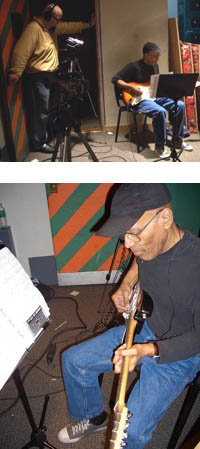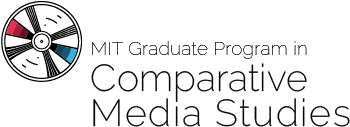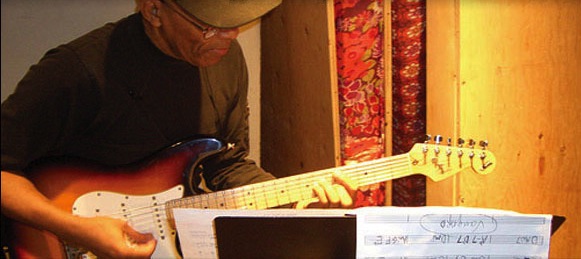At CMS, some of the best media initiatives unfold beyond the classrooms. Take, for instance, the latest project by Generoso “Gene” Fierro, the program’s undergraduate advisor.
A long-time DJ and self-taught filmmaker, Fierro recently conflated his love for early Jamaican music and silver-screen spectacle to complete a 67-minute documentary titled Lynn Taitt: Rock Steady.
Through his decade-old radio show “Generoso’s Bovine Ska and Rocksteady” on MIT’s own WMBR, Fierro became aware of the significant strummings of Nearlin ‘Lynn’ Taitt, a session guitarist credited with inventing the musical style known as rocksteady, a precursor to reggae.
Fierro arranged for Taitt to team up with young musicians from the New England Conservatory of Music and compose a piece with jazz composer Ran Blake. Armed with three cameras and unrelenting enthusiasm, Fierro filmed Taitt’s Cambridge sessions to create a work that celebrates the creative process as much as it honors an unsung talent.

‘Music Fuels the Narrative’
In the film, Fierro juxtaposes shots from recording sessions with excerpts from interviews with Taitt’s friends, fans and fellow musicians including Hopeton Lewis, Cederick Aimbrooks and Art Cohen. That said, the film is in many ways bigger than its subject.
“Once Blake was on board,” explains Fierro, “the documentary was no longer a straight bio. Instead, it features seven segments of music spliced with visuals of musicians making music. I wanted to focus on the creative process. The music, rather than Taitt’s story, fuels the narrative.”
As a result, Rock Steady is replete with effective close-up shots of expert fingers and guitar strings, agile wrists and drumsticks, smiling faces and satisfied nods. Fierro hopes that his editorial choices will convey his personal regard for the process of music making. “Some recent documentaries don’t let you appreciate the music or understand the creative process,” complains Fierro, hoping to distinguish his work with its musical emphasis.
Before shooting his documentary, Fierro had worked on only a few narrative shorts, but was never hesitant about documenting Taitt’s recordings. “I felt confident filming,” he says. “Once I heard the music, I knew the film would work brilliantly.” Moreover, Fierro was certain that Taitt would make a compelling subject, having previously interviewed him for radio. “Visually, Taitt is an amazing character – you want to see him when he talks,” Fierro says. In fact, the film abounds with interesting anecdotes from Taitt who pithily recalls the musical landscape of early 1960s Jamaica.
Fierro is quick to laud his production team, which was comprised of friends and colleagues, and even a regular listener of his radio show who came on board as an editor after hearing Fierro discuss the project on air.
Currently, Fierro is in the process of submitting his work to the festival circuit. But he’s already conceptualizing his next film project. “I’ve enjoyed working with film,” he says. “It’s such an exciting medium because unlike radio, which is largely improvisational, film editing requires a clear vision.” And patience. It took Fierro and his editor Mothra Millette almost four weeks to edit the music sequences, which required that the audio and visuals be perfectly synchronized. What that means, though, is that Fierro is well-positioned to work on his dream project, a film about singer Prince Buster, “the David Bowie of Jamaica.”




